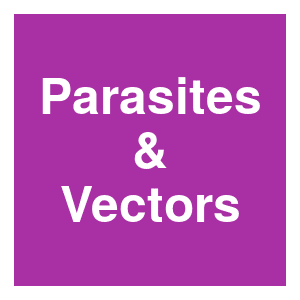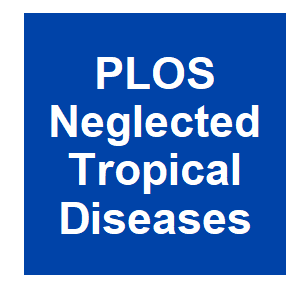
Keywords: Wolbachia drive

|
Estimating the effect of the wMel release programme on the incidence of dengue and chikungunya in Rio de Janeiro, Brazil: a spatiotemporal modelling studyG. Ribeiro dos Santos, B. Durovni, V. Saraceni, T. I. Souza Riback, S. B. Pinto, K. L. Anders, et al., The Lancet Infectious Diseases, 2022.
Summary Background Introgression of genetic material from species of the insect bacteria Wolbachia into populations of Aedes aegypti mosquitoes has been shown in randomised and non-randomised trials to reduce the incidence of dengue; however, evidence for the real-world ... Keywords: Aedes, aegypti, dengue, modeling, population modification, Wolbachia drive, ZIKA |

|
Wolbachia Dynamics in Mosquitoes with Incomplete CI and Imperfect Maternal Transmission by a DDE SystemY. Su, B. Zheng and X. Zou, Bulletin of Mathematical Biology, 84:95. 2022.
In this paper, we propose a delay differential equation model to describe the Wolbachia infection dynamics in mosquitoes in which the key factor of cytoplasmic incompactibility (CI) is incorporated in a more natural way than those in the literature. By analyzing the dynamics of ... Keywords: Aedes, aegypti, dengue, modeling, population modification, Wolbachia drive, ZIKA |

|
Sensitivity of wMel and wAlbB Wolbachia infections in Aedes aegypti Puducherry (Indian) strains to heat stress during larval developmentK. Gunasekaran, C. Sadanandane, D. Panneer, A. Kumar, M. Rahi, S. Dinesh, B. Vijayakumar, M. Krishnaraja, S. K. Subbarao and P. Jambulingam, Parasites and Vectors, 15:221. 2022.
BACKGROUND: ICMR-Vector Control Research Centre, Puducherry, India, developed two colonies of Aedes aegypti infected with wMel and wAlbB Wolbacia strains called Ae. aegypti (Pud) lines for dengue control. The sensitivity of wMel and wAlbB strains in Ae. aegypti (Pud) lines to ... Keywords: Aedes, aegypti, dengue, modeling, population modification, Wolbachia drive, ZIKA |

|
Simple, sensitive, and cost-effective detection of wAlbB Wolbachia in Aedes mosquitoes, using loop mediated isothermal amplification combined with the electrochemical biosensing methodP. Thayanukul, B. Lertanantawong, W. Sirawaraporn, S. Charasmongkolcharoen, T. Chaibun, R. Jittungdee and P. Kittayapong, PLOS Neglected Tropical Diseases, 16:e0009600. 2022.
Author summary Mosquito-borne diseases such as dengue, chikungunya, zika, and yellow fever are transmitted to humans mainly by the bites of Aedes aegypti mosquitoes. Controlling the vectors of these diseases relies mostly on the use of insecticides. However, the efficiency has ... Keywords: Aedes, aegypti, dengue, modeling, population modification, Wolbachia drive, ZIKA |

|
Local adaptation of Aedes aegypti mosquitoes to Wolbachia-induced fitness costsP. A. Ross and A. A. Hoffmann, bioRxiv, 2022.05.06.490959. 2022.
Aedes aegypti mosquito eggs can remain quiescent for many months before hatching, allowing populations to persist through unfavorable conditions. Aedes aegypti infected with the Wolbachia strain wMel have been released in tropical and subtropical regions for dengue control. wMel ... Keywords: Aedes, aegypti, dengue, modeling, population modification, Wolbachia drive, ZIKA |

|
Transient Introgression of Wolbachia into Aedes aegypti Populations Does Not Elicit an Antibody Response to Wolbachia Surface Protein in Community MembersE. Lee, T. Hien Nguyen, T. Yen Nguyen, S. Nam Vu, N. Duong Tran, L. Trung Nghia, Q. Mai Vien, T. Dong Nguyen, R. Kriiger Loterio, I. Iturbe-Ormaetxe, H. A. Flores, S. L. O'Neill, D. Anh Dang, C. P. Simmons and J. E. Fraser, Pathogens, 11. 2022.
Wolbachia is an endosymbiotic bacterium that can restrict the transmission of human pathogenic viruses by Aedes aegypti mosquitoes. Recent field trials have shown that dengue incidence is significantly reduced when Wolbachia is introgressed into the local Ae. aegypti population. ... Keywords: Aedes, aegypti, dengue, modeling, population modification, Wolbachia drive, ZIKA |

|
A metapopulation approach to identify targets for Wolbachia-based dengue controlA. Reyna-Lara, D. Soriano-Paños, J. H. Arias-Castro, H. J. Martínez and J. Gómez-Gardeñes, Chaos, 32:041105. 2022.
Over the last decade, the release of Wolbachia-infected Aedes aegypti into the natural habitat of this mosquito species has become the most sustainable and long-lasting technique to prevent and control vector-borne diseases, such as dengue, zika, or chikungunya. However, the ... Keywords: Aedes, aegypti, dengue, modeling, population modification, Wolbachia drive, ZIKA |

Contact
David O’Brochta
Foundation for the
National Institutes of Health
geneconvenevi@fnih.org
RSS

